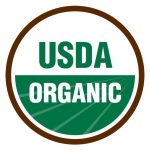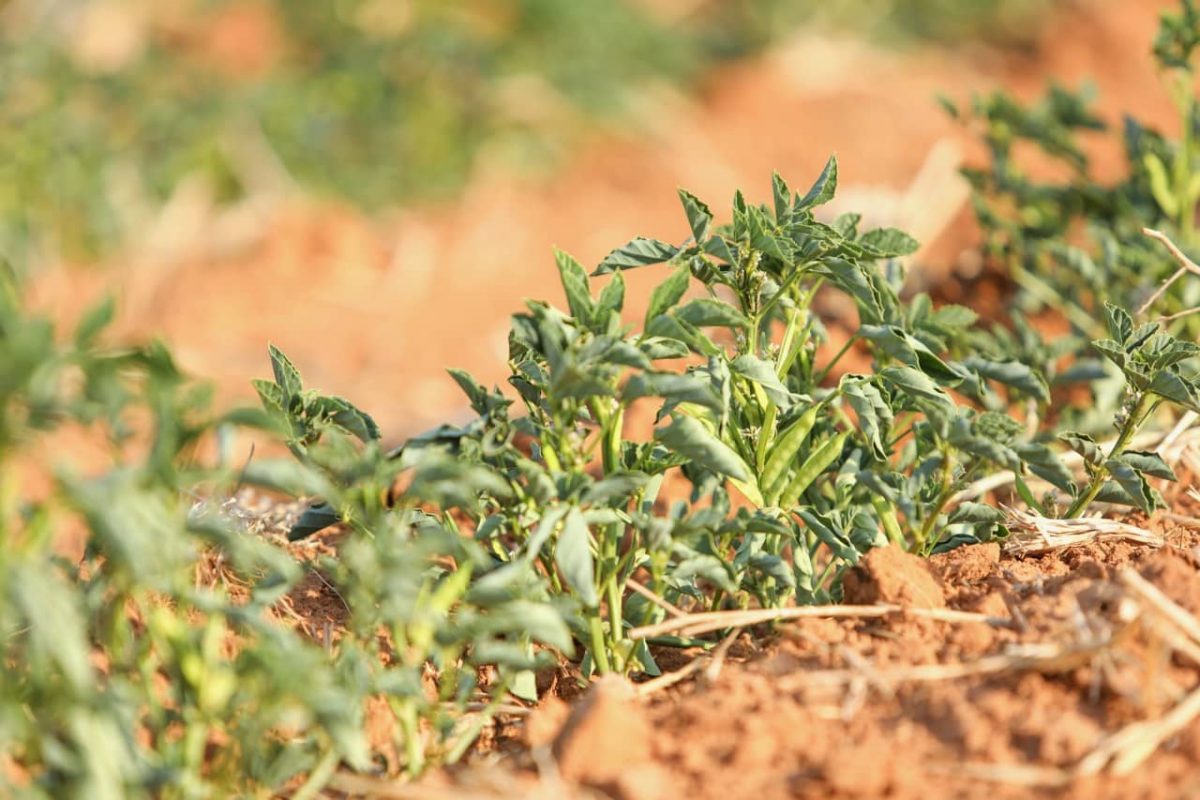
Guar gum is a multi-faceted amalgam that has been grown in the United States since the dawn of the 20th century. It is an additive, which is often used as a thickening agent within salad dressings, cheeses, ice creams, soft drinks, bakery goods, meats and pet foods to name a few, as well as industrial applications such as cosmetics, pharmaceuticals and other products.
The challenge when dissolving guar gums in water is lumps or clumps can form if it’s not dispersed properly, and these lumps can be unpleasant for the average chef, or worse, they can cause problems like clogged filters within a manufacturer’s production process or within the viscosity of the final product.
So our team created the following guide, which includes four key steps to avoid clumps or lumps or fish-eyes when dispersing guar gum powder into water.
If you’re a home-maker who cooks for a family or a commercial chef fulfilling the needs of a restaurant clientele, or you’re a manufacturing company struggling with undissolved gums, continue reading or contact our team today — 806.637.4662
Purchase our USDA certified organic guar directly!
A Little Guar Gum History
This desert legume has thrived for centuries in southern Asia where it has been used as sustenance for both humans and animals. Guar wasn’t utilized in industrial applications in the United States until 1943.
Its commercial evolution was developed at the University of Arizona by a man named Whistler who closely studied the molecular structure of the guar plant. He visualized its vast industrial potential and recommended its expansion as a domestic crop for industry.
What Is Agglomeration and How Does It Affect Guar Quality?
Agglomeration is a natural phenomenon that occurs when particles stick to one another or to solid surfaces and combine to create new molecule sizes. In the case of guar gum and other powders, this is an undesirable quality, often resulting in inconsistent buildup, caking or lumping. These unwanted formations can cause many problems for food manufacturers including: the clogging of filters in production tanks and poor adhesive qualities in the finished product.
Agglomeration transforms guar gum powder into porous granules, which in turn retain all of the properties of fine powder minus the mess (excessive dust) usually associated with it. This absorbency is beneficial for making easily dispersible food and pigment granules for “designer” foods, and for permeable materials that are used in the chemical and petrochemical industries for refining liquids and gases into intermediate and end-use products.
The goal of size enlargement of molecules via the process of agglomeration is to develop a product with larger particle dimensions. The resulting item is not really an original, as its structure still retains the original shape and size of its solid particles, which are held together by a system of binding parts working together.
The character of the new product includes porosity or void fraction, which means that it is full of tiny holes. The word is Greek in origin and derives from the word poro, meaning passage. Anything containing absorbency lets things pass through. Technically, porosity measures the number of void spaces in a material, and is a fraction of the volume of voids over the total volume.
In the case of guar gum quality, agglomeration serves to alter or upgrade the character of solid matter (dust stuff) or modify their surfaces in some way. The process also improves the attributes of granular solids. Large particles retain less dust and are less inclined to stick together, which collectively enhances flow performance. These factors make the storage, handling, and feeding of materials less risky, even when dealing with difficult materials.
The permeable granules are more easily measured and mixed. Due to the fact that the process creates low dust content, there is less danger to the operator during handling. The hydration process is initiated almost immediately after the gums are added to water, and sometimes occurs even before the gum is fully dispersed. When this happens, gum balls or lumps can easily form that retain dry gum powder on the inside where the water couldn’t penetrate.
Dispersing such lumps is time-consuming and requires an appropriate stirring technique. In contrast, a porous granulate, in which the fine powder particles are loosely bound, sinks in quickly and is wetted throughout. The water penetrates the void spaces between the bound particles and accelerates the granule’s breakup.
The Three Types of Agglomeration
Particulate solids are enlarged via three methods, namely: tumble/growth (wet), pressure and sintering ( use of heat). In the case of tumble/growth or wet agglomeration, volume-related separation and forces related to surface adhesion control the consistency of particles. In order to be successful, all separation forces in the system, such as gravity and inertia, must be smaller than the magnitude and direction of attraction.
The process also involves introducing a binding agent that creates liquid connections between the particles which, after drying, leave behind solid bridges that stabilize the granular structure.
In pressure agglomeration, enlarged formations occur by applying external forces to dry solids that will define the ultimate shape of the final product. The level of applied force can involve low, medium and high-pressure techniques. Sintering which is also known as frittage, uses heat without melting it to the point of conversion of liquid to form a solid mass of material.
How To Mix Guar Gum With Water
While our team at Guar Resources fully understands that all powdered gums tend to form lumps when added to water, some gums create more complications than others. This is due to their absorbent character, which acts as a magnet that attracts and retains water molecules.
Guar gum can be dispersed with other ingredients or separately, sometimes in concentrated form. Although processing methods vary widely according to manufacturer, the quality of ingredients, thickness of the end product and basic requirements remain the same.
Timing Is Everything With Guar
Guar gum powder must be added rapidly into liquid because it is readily soluble, and as such, can become increasingly difficult as the mixture thickens and temperatures rise. The first three minutes mark the most important time after guar gum is dissolved into water.

After five to ten minutes of hydration, both the level of gum needed and its operative character increase dramatically. This is due to the fact that gums must attain a level of 50% hydration before they can be free and independent.
Other Ingredients Can Affect Hydration Negatively
If other ingredients are added before the mixture thickens, the full hydration process can be sluggish, and they can interfere with both the gum’s ability to hydrate and end product efficiency. This is why it it is usually preferable to disperse and hydrate the gum first in order to avoid reactions with other components, such as salts or acids like vinegar.
Reducing The Risks of Lump Formation
Separating guar particles so that they do not form lumps when added to water requires careful strategy. The powder has to be added to the liquid at a controlled rate while it is vigorously agitated to reduce the formation of agglomerates. Premixing guar gum with other powdered ingredients, such as sugar, reduces the risk of lumps, as it has no effect upon the rate of hydration.
Explore how guar is used to build texture in reduced sugar beverages.

Instead, the sugar serves as a dispersion agent because it separates the particles. The proper combination for blending with sugar breaks down to 1 part gum to at least 10 parts sugar. All ingredients should be mixed well and scattered over rapidly mixing water.
Another option concerns dispersal into a slurry comprised of liquids such as oils, alcohols or glycols. This mixture is made with 1 part gum mixed into 5 parts of an organic solvent (soybean oil, propylene glycol, etc.). This amalgam coats the gum particles and permits hydration with a reduced risk of lumps. Water-based ingredients must always wash off the oil before the gum can properly hydrate.
Dispersing Guar Gum Into A Vortex
The guar gum powder must be slowly introduced into the vortex of a vessel that has already been set into motion. Once it is dispersed, the gum begins to hydrate.

In the case of a high shear mixer, the gum should be slowly sifted or sprinkled into the vortex of the liquid. This produces clean dispersions without agglomerates and completely hydrates the gum in far less time required by more conventional means. There is no need with such a mixer for the pre-mixing of gum with powders or other ingredients and consistent product quality is assured.
With a high shear mixer, the powder material is moistened by the rapid spraying of liquid and is stirred smoothly via a rotor located at its bottom. This ensures a thorough mixing and an even distribution of the moisture in the product. In addition, the formation of liquid bridges increases the adhesion between the particles during agglomeration.
How To Avoid Problems With Guar Gum Dispersal
Dispersion of gums and thickeners using conventional agitators can give rise to several issues. For one thing, there is always the possibility of operator error, and for another, industrial agitators do not produce sufficient shear to rapidly break agglomerates down, which results in long mixing times and low output.
To compensate for this very real possibility, many formulations contain unnecessarily high levels of gum, which increases the cost of raw materials. During storage or subsequent processing, unhydrated guar gum can gradually moisten, which results in unwanted alterations in product viscosity and stability.
Guar Resources And Guar Gum Powder
We are the leading manufacturer and purveyor of Kosher, Halal, Non GMO, FSSC 22000 and USDA certified organic guar gum powder within the United States, and we harness its thickening and stabilizing properties to serve many useful purposes within the food industry as well as a diverse array of other industries.
Situated in Brownfield, Texas, we produce 15.5 million pounds of guar gum powder annually. Guar is sown in May-July and harvested from October to December. The dry Southern Plains of West Texas are the perfect milieu for this legume with minimal water demands that flourishes in dry, desert climes and releases nitrogen into the soil, which renders it ideal for crop rotation.

Discover 9 reasons to use Guar Resources as your Guar Supplier!
The most cutting edge technology and industry proficiency allows us to produce the highest quality guar gum powder made anywhere throughout the United Sates that is Kosher, Halal, Non GMO, FSSC 22000 and USDA certified organic guar gum powder that is also ISO 9001:2015 compliant.
In December 2014, we acquired West Texas Guar and initiated the construction of a brand-new state-of-the-art processing plant.
In 2016, a centrally controlled new facility opened that operates 24/7. Here bean splitting and powder production is performed. The seeds are mechanically de-husked, hydrated, milled and screened according to application, and the beans are processed into various intermediate products and powder.
The north side if the facility handles splitting operations; the south side converts splits to powder, and our quality Assurance team inspects the raw material after it is properly graded and processed before packaging and distribution.
In Conclusion
Highly profitable and versatile, guar gum power is a highly valued commodity for many modern industries including farming, food, pet and animal care products drilling and hydraulic fracturing, construction and textiles. Its preparation, which involves dispersal into liquid, is vital to ensure its capabilities and ultimate effectiveness.
If you’re a food or drink manufacturer, or any other type of company that requires guar powder dispersion within water, call our team today to find out more about the many qualities of guar and how its unique gum powder can enhance your commercial enterprise.
[sc_fs_faq html=”true” headline=”h2″ img=”” question=”How Do You Prevent Guar From Lumping In Water?” img_alt=”” css_class=””]
1) Switch to using an agglomerated guar gum
2) Always disperse guar gum into a vortex
3) Blend guar gum with other dry ingredients
4) Slurry the gum with an organic oil solvent [/sc_fs_faq]
Images credit: Pixabay






